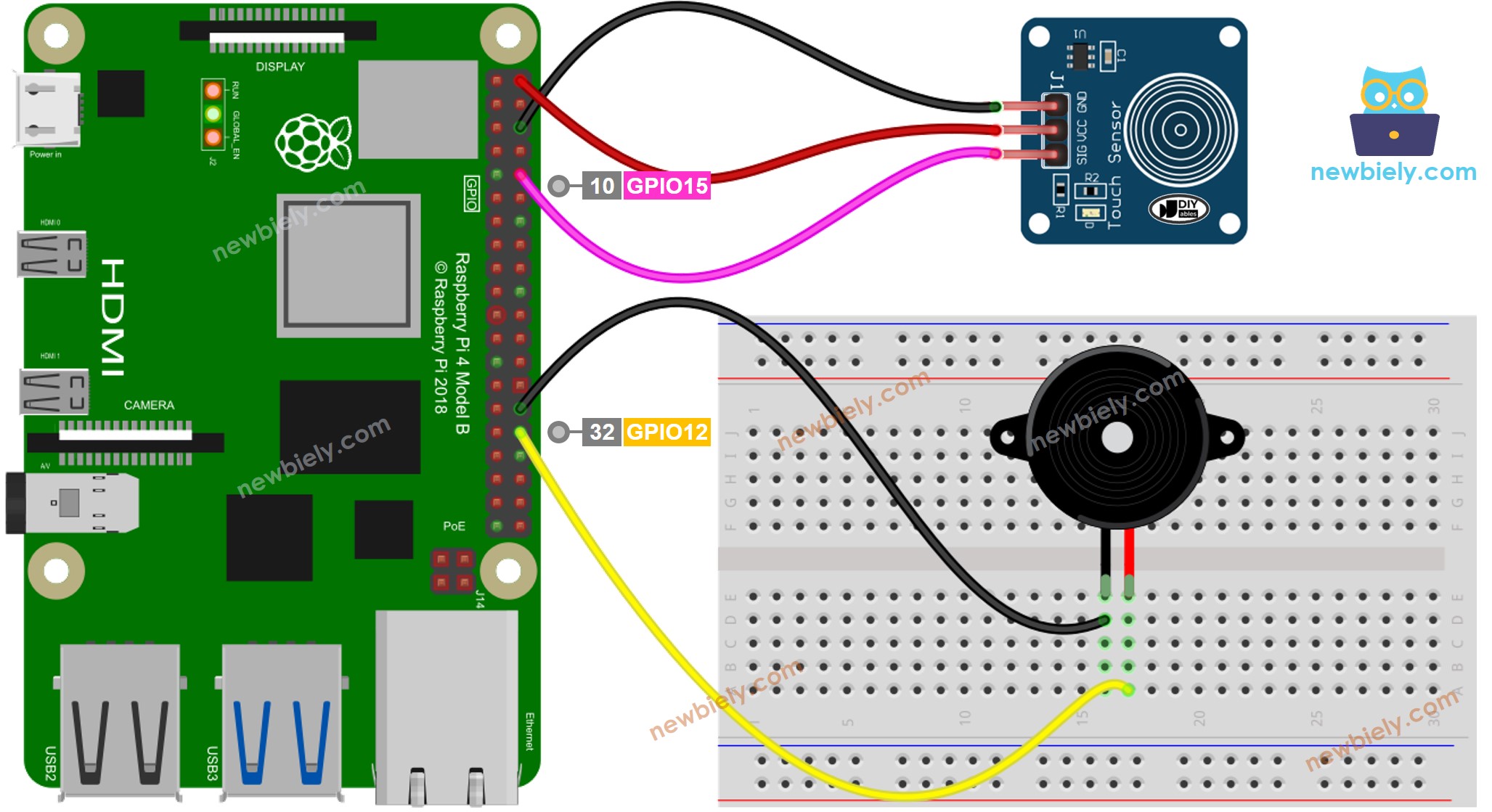Raspberry Pi - Touch Sensor - Piezo Buzzer
This tutorial instructs you how to use Raspberry Pi and touch sensor to control piezo buzzer. In detail:
- Raspberry Pi produces a sound when the touch sensor is touched.
- Raspberry Pi ceases making noise when the touch sensor is not engaged.
- Raspberry Pi plays a melody when the touch sensor is touched.
Hardware Preparation
Or you can buy the following kits:
| 1 | × | DIYables Sensor Kit (30 sensors/displays) | |
| 1 | × | DIYables Sensor Kit (18 sensors/displays) |
Additionally, some of these links are for products from our own brand, DIYables .
Overview of Piezo Buzzer and Touch Sensor
If you are unfamiliar with piezo buzzer and touch sensor (including pinout, functionality, and programming), the following tutorials can help:
Wiring Diagram

This image is created using Fritzing. Click to enlarge image
To simplify and organize your wiring setup, we recommend using a Screw Terminal Block Shield for Raspberry Pi. This shield ensures more secure and manageable connections, as shown below:

Raspberry Pi Code - Simple Sound
In this section, we'll program Raspberry Pi to trigger a piezo buzzer to generate a simple sound whenever you touch your finger on the touch sensor.
Detailed Instructions
- Make sure you have Raspbian or any other Raspberry Pi compatible operating system installed on your Pi.
- Make sure your Raspberry Pi is connected to the same local network as your PC.
- Make sure your Raspberry Pi is connected to the internet if you need to install some libraries.
- If this is the first time you use Raspberry Pi, See how to set up the Raspberry Pi
- Connect your PC to the Raspberry Pi via SSH using the built-in SSH client on Linux and macOS or PuTTY on Windows. See to how connect your PC to Raspberry Pi via SSH.
- Make sure you have the RPi.GPIO library installed. If not, install it using the following command:
- Create a Python script file touch_sensor_buzzer.py and add the following code:
- Save the file and run the Python script by executing the following command in the terminal:
- Place your finger on the touch sensor and hold it there for several seconds.
- Listen to the sound coming from the piezo buzzer.
The script runs in an infinite loop continuously until you press Ctrl + C in the terminal.
Code Explanation
Check out the line-by-line explanation contained in the comments of the source code!
Raspberry Pi plays the melody of the song
In this section, we'll program Raspberry Pi to trigger a piezo buzzer to play the song "Jingle Bells" when you place your finger on the touch sensor.
Detailed Instructions
- Create a Python script file touch_sensor_buzzer_Jingle_Bells.py and add the following code:
- Save the file and run the Python script by executing the following command in the terminal:
- Touch your finger on the touch sensor.
- Hear the tune from the piezo buzzer.
Code Explanation
Check out the line-by-line explanation contained in the comments of the source code!
